 |
| The Local Time is Saturday, 27-Jul-2024 11:13:26 CEST |
Witney Tourist Information |
|
|||
| YOU ARE HERE: Main Home Page > Places to Visit > Witney |
|
|
|
|
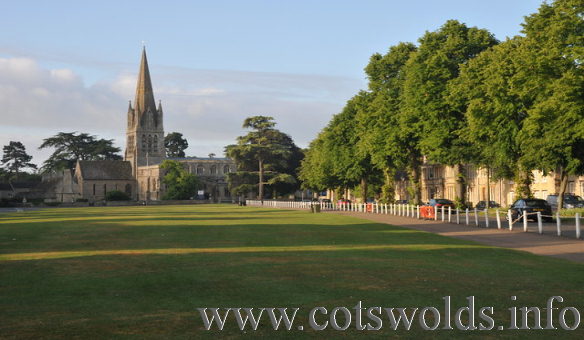 |
|||||||||||||||||||||||||||||||||||||||||||||||||||||||||
The Market town of Witney in the Oxfordshire Cotswold is on the River Windrush, 10 miles from Oxford. It has a population 22,800 (2001). Witney is famous for the manufacture of blankets, gloves, and other woollen goods. Witney was selected by The Sunday Times newspaper (March 2014) as one of the best places to live in Britain . The church of St. Mary is a 13th-century cruciform church and restored in 1867, the Henry Box school was built in 1663, the Blue Coat School in 1723 (the school was set up in Witney in 1723 expressly to teach the sons of weavers the skills they would need to become weavers' apprentices), and the Blanket Hall in about 1720. |
|||||||||||||||||||||||||||||||||||||||||||||||||||||||||
|
|||||||||||||||||||||||||||||||||||||||||||||||||||||||||
The small roofed open-air shelter known as the Butter Cross in the market place, near to the Town Hall, was erected in 1683, replacing the old Butter Cross which formerly stood on this site. Witney is the largest town in the Oxfordshire Cotswolds and has grown rapidly over the last 50 years but still retains the feel of a charming and bustling market town with an excellent range of shops and a twice weekly market. Once famous across the world for its blanket making, gloves and other woollen goods. Much of the town's architecture reflects the prosperity brought by the woollen trade. The architectural diversity of the town is reflected in the style of accommodation available, with hotels both large and small, ancient and modern, a broad range of Bed and Breakfasts and a good selection of Self-Catering cottages.
The Henry Box comprehensive school near the church of St. Mary takes its name from a local boy who, like Dick Whittington, went to London to seek his fortune. In 1662 having succeeded he left money to fund the formation of the new school. Originally founded and endowed as a free grammar school. |
|||||||||||||||||||||||||||||||||||||||||||||||||||||||||
A short distance from the town centre is the parish of Cogges where a Victorian working
The Charlbury road leads through one of Witney's best preserved streets - West End, which gave rise to the song "Just an old fashioned house in an old fashioned street". Near to Witney (2.5 miles) is the beautiful village of Minster Lovell with thatched cottages and romantic ruined Manor House. Witney Lake and Meadows is a tranquil haven for wildlife just a short walk from the town centre. Get away from it all with a walk around a beautiful lake and through peaceful fields. Just a few miles from Witney you will find Blenheim Palace, home of the 11th Duke of Marlborough and birthplace of Sir Winston Churchill.
|
|||||||||||||||||||||||||||||||||||||||||||||||||||||||||
WITNEY BLANKET HALL
After 1845 the New Mills established their own measuring, and the redundant Blanket Hall became variously a Brewery, a Lemonade Factory, Engineering Shop, Office of births marriages and deaths, Dancing School, and latterly, a distinctive gentleman’s house. During most of its history, the Hall is also where many of the town’s Public Meetings took place, the death of Kings solemnly commemorated and the birth of Princes celebrated with great feasts. In the 18th Century, the Hall housed the town’s Fire Pump. In 2015, the Hall reopened its doors to reveal this illustrious past and offer woollen blankets and throws, coffee pies and assemblies, both commercial and cultural. Visitors are always welcome and are invited to come and find out more about the infamous Witney Blankets. The Pie Shop offers its famous pies and platters, as well as tea, coffee and cakes. The Hall is licenced so wine and Blanket Hall Beer is always available. Tour of the Blanket Hall usually take place at 2pm but can be arranged at other times by pre-booking. The Hall can also be open outside hours by arrangement and is often available for Hire by Companies and Societies. |
|||||||||||||||||||||||||||||||||||||||||||||||||||||||||
ALMSHOUSESWitney has three groups of almshouses. Holloways, beside the parish church, were given by John Holloway in the 18th century and were refurbished in 1868. Townsend Almshouses, on the old Oxford Road near Newland, date from 1821. William Townsend was a successful London businessman who had been born in Witney. He gave money to build the almshouses for “aged unmarried women”.
The third set of almshouses is on Church Green near the Henry Box School. They were first mentioned in 1652 but by the end of the 18th century they were in such a poor state of repair that they had to be rebuilt. They were further modernised in 1814 after which they ceased to be almshouses and were let for rent. The money from the rents was used to buy food, mainly bread and beef, for the poor and so the cottages, which still stand today on the edge of the green, are known as the 'Bread and Beef' Houses. |
|||||||||||||||||||||||||||||||||||||||||||||||||||||||||
|
|||||||||||||||||||||||||||||||||||||||||||||||||||||||||
|
|||||||||||||||||||||||||||||||||||||||||||||||||||||||||
| BACK TO TOP | |||||||||||||||||||||||||||||||||||||||||||||||||||||||||
Witney Tourist Information Guide |
|||||||||||||||||||||||||||||||||||||||||||||||||||||||||
| This page last modified Thursday, 11-Feb-2021 13:24:20 CET | |||||||||||||||||||||||||||||||||||||||||||||||||||||||||

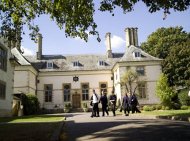
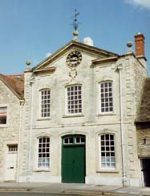
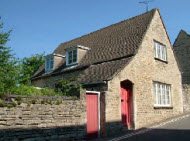
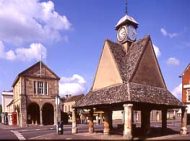 The market square which lies at the junction of the two main streets contains the Buttercross, a medieval marketing and meeting place where women from neighbouring villages gathered to sell butter and eggs. It has a steeply gabled roof surmounted by a clock-turret added in 1683. Opposite is the 17th century Town Hall. Market Square widens into Church Green which is dominated by the tower and spire of the 13th century church.
The market square which lies at the junction of the two main streets contains the Buttercross, a medieval marketing and meeting place where women from neighbouring villages gathered to sell butter and eggs. It has a steeply gabled roof surmounted by a clock-turret added in 1683. Opposite is the 17th century Town Hall. Market Square widens into Church Green which is dominated by the tower and spire of the 13th century church. 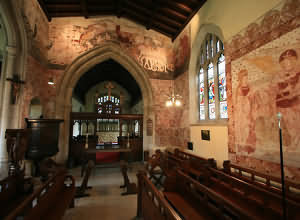 In nearby South Leigh the Church of St James is home to some remarkably well preserved medieval wall paintings and is well worth a visit.
In nearby South Leigh the Church of St James is home to some remarkably well preserved medieval wall paintings and is well worth a visit. 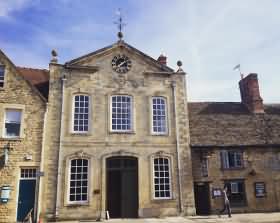 Witney Blanket Hall was built in 1721 by the Company of Blanket Makers. For over 120 years, every blanket woven in the town came to the Hall to be weighed and measured, and upstairs in the Great Room the Company set the Rules for the Trade.
Witney Blanket Hall was built in 1721 by the Company of Blanket Makers. For over 120 years, every blanket woven in the town came to the Hall to be weighed and measured, and upstairs in the Great Room the Company set the Rules for the Trade. 
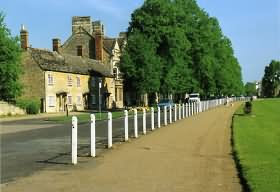
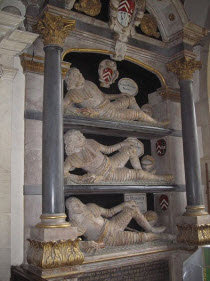 Lord Redesdale and the Mitford Sisters
Lord Redesdale and the Mitford Sisters